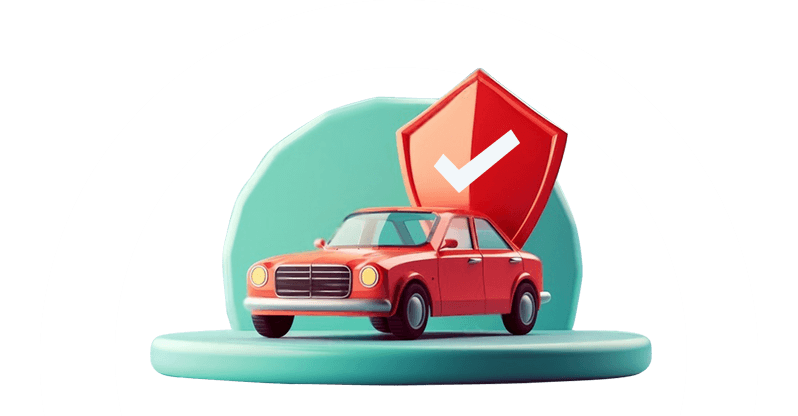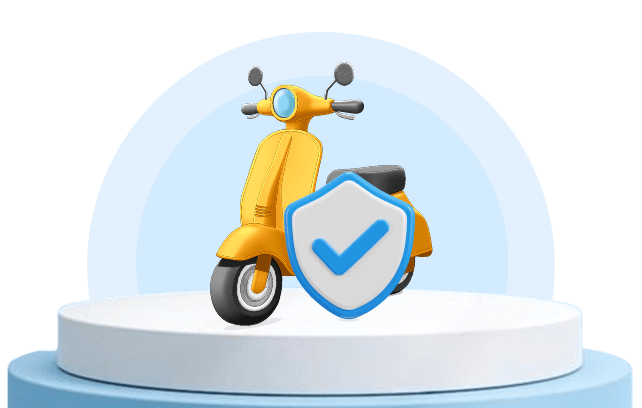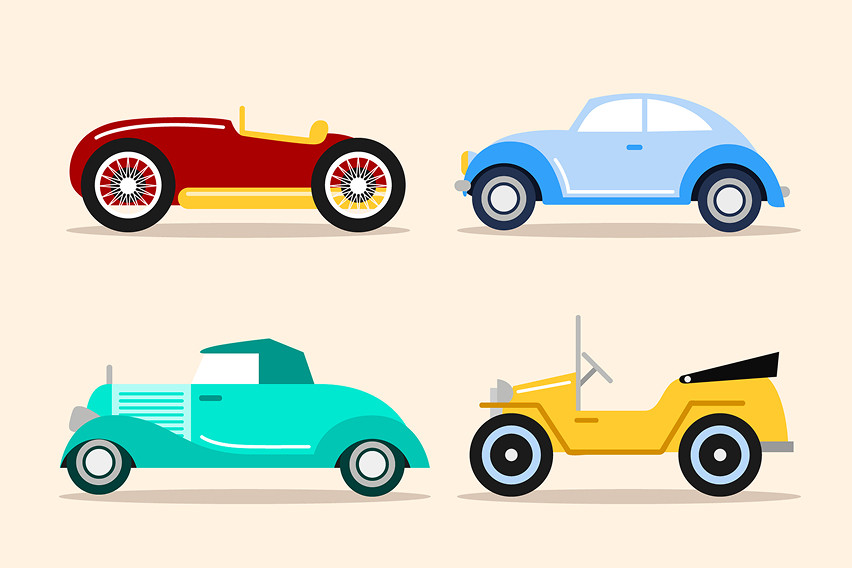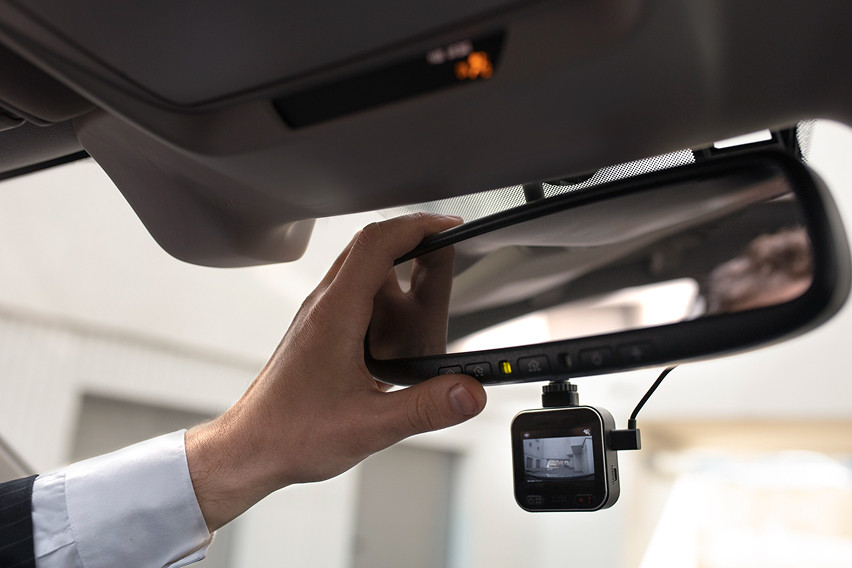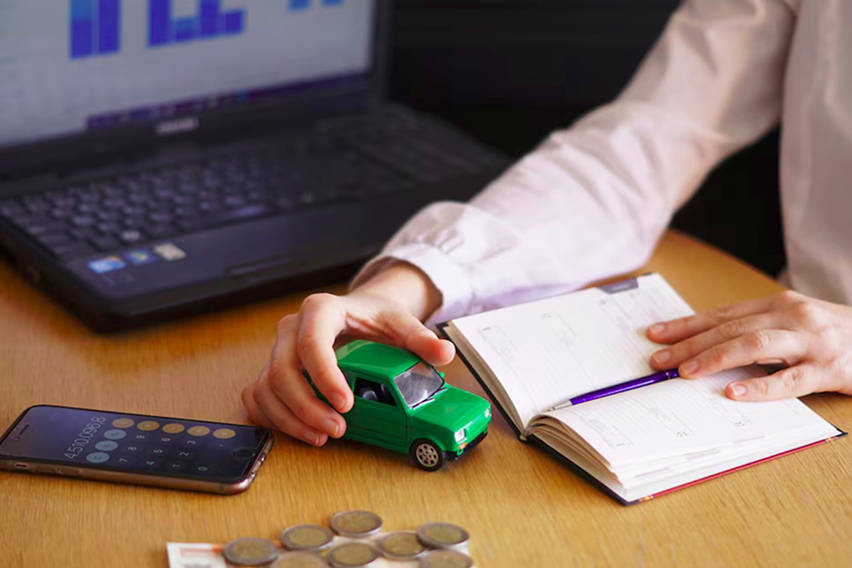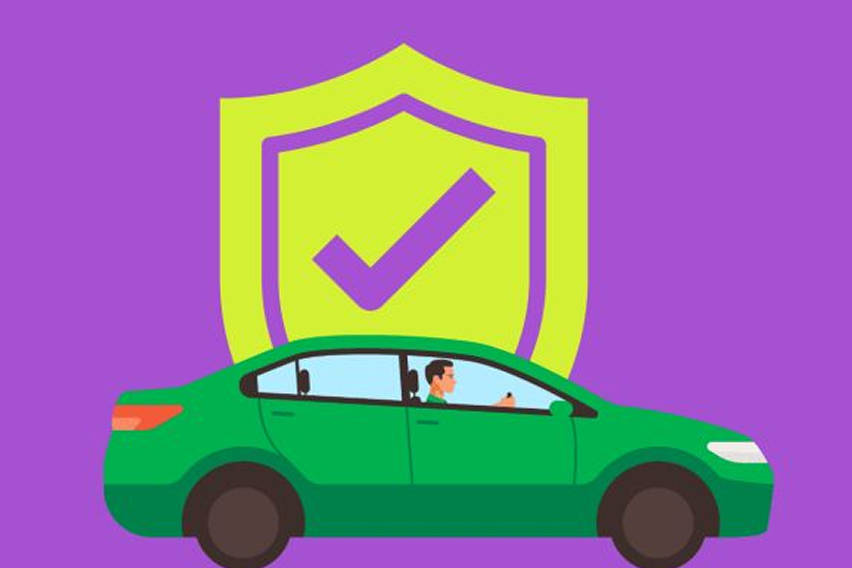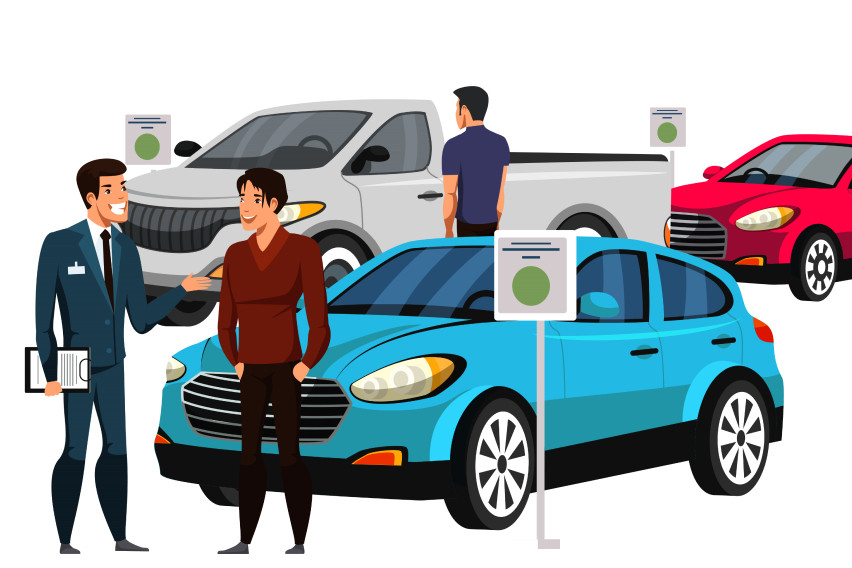
Are you thinking about buying a car? If yes, then we’d like to point out the benefits of purchasing a second-hand car. If all the precautions and other things are done right, it could be a profitable investment. Also, the Philippines' second-hand or used car market is booming, especially with the skyrocketing prices of new cars. More and more Filipinos are getting home pre-loved vehicles, which are not only affordable and reliable, but also allow them to get a better car in the same budget.
The used car market in the Philippines is vast, with so many options, from authorised dealerships, online marketplaces, to private sellers, consumers are spoiled for choice. But here’s a catch: not every seller is genuine; therefore, one needs to be extra careful and check everything twice before buying.
Issues like false documents, hidden damages, or stolen property are some of the common scams of the used car market. But don’t worry, we are here to help, providing a complete checklist on vehicle inspection, negotiation, and (of course) insurance.
After gaining all the information here, you are ready to make a good purchase and drive around happily and safely. So, let’s begin …
Used car shopping - A wise choice
It is genuinely a smart move to skip the attraction and limelight of a brand-new car and instead go for a ‘fit and fine’ pre-loved unit.
To justify our claim of buying used cars as a wise financial decision, here are a few arguments -
Low price, huge savings: Used cars are cheaper compared to new units, meaning you save a substantial amount of money. Also, did you know that a new vehicle starts to lose its value the moment it leaves the showroom, and in the first year alone, it loses 20-30% value. Meaning, a two-year-old car costs thousands of pesos less compared to its new counterpart, while still being in good condition.
More choices: When in the used car market, your budget stretches. For instance, with PHP 500,000, your purchase options in the new car market would include a handful of entry-level sedans; on the contrary, in the used car market for the same amount you’ll have at your disposal options like a higher-end sedan, well-maintained SUV, and other cars with modern features, premium audio system, and top-notch safety.
Skip steep depreciation: It is a well-known fact that new cars depreciate the fastest in their first few years. So, by purchasing a used unit, you already jump that steep depreciation phase, thus making your used car ownership a more financially stable decision.
Also, after a certain age, depreciation slows down. Meaning, if you take good care of your used car, you’ll be able to sell it at a reasonable price.
A few other benefits of owning a used car include lower insurance premiums and reduced LTO registration fees, as well as going for a more environmentally friendly option.
Also Read: Does the type of car you drive affect insurance cost? - Let’s find out
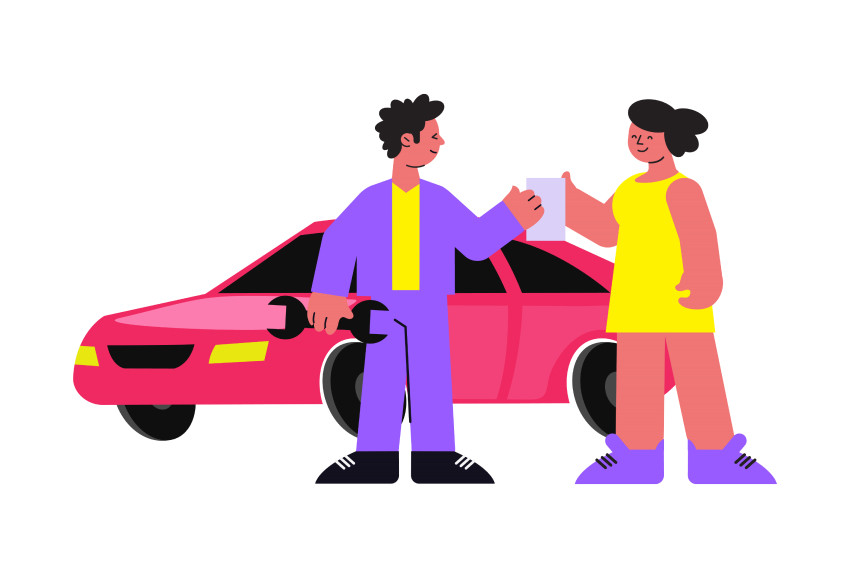 Photo from Freepik
Photo from FreepikUsed car inspection checklist
Now that you know the benefits of owning a used car, here is a pre-purchase checklist you can not skip.
Vehicle’s official documentation
The first thing you should check while buying a second-hand vehicle is its official documents, which in the Philippines are the OR/CR, i.e., the Official Receipt and Certificate of Registration. Both of these documents are given by the LTO after completion of the vehicle registration, making it legal to drive on public roads.
Other things that are a must to check for a vehicle’s identity are its -
- Plate number
- Chassis number
- Engine number
Furthermore, it is essential to confirm that the involved vehicle is not stolen or has any criminal record, which can be done by visiting the PNP-HPG or via LTO online records.
Exterior & interior inspection
Once you are through with the documentation verification, it is time to inspect the vehicle’s condition - both inside and outside.
- On the outside, look out for - rust around the wheel well and door edges, mismatched paint (indicating a repair job), and uneven tyre wear (indicating bad alignment or suspension issue).
- On the inside, check the following - seats for stains & rips, working dashboard lights, and effectiveness of the air-con system (the Philippines' heat demands good cooling).
Mechanical evaluation
Time to get your hands dirty. However, for the engine and mechanical inspection, we’d recommend bringing along an experienced mechanic and asking him to do a thorough check-up.
In case you are on your own, check for engine noise; remember, a healthy mill sounds smooth. Watch out for excessive smoke and do check the fluid levels and oil leaks. Also, check the brake pedal; an uneven braking experience hints towards a costly repair in the future.
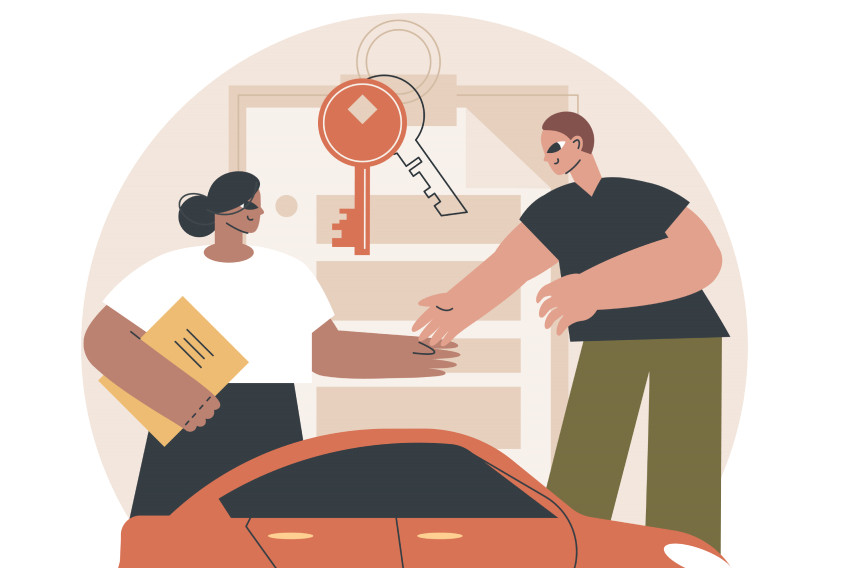 Photo from Freepik
Photo from FreepikTake a test drive
While all the above-mentioned inspections are a must, it is equally important to test drive the vehicle you are planning to buy. This will allow you to check several important things, including driving comfort, steering response, and acceleration.
Make sure to drive the car at different speeds and try listening for any unusual sounds.
Car’s history & mileage
Used car sellers are known for odometer tampering, wherein the vehicles’ mileage is intentionally reduced to represent that it has been driven less. Here, we’d advise you to compare the odometer reading with that of the service records.
Also, investigate the vehicle’s history of accidents or flooding, as it could lead to future repairs.
Used car insurance - An overview
Do used cars require insurance?
The answer is YES. In the Philippines, be it a brand-new, old, or used car, insurance is a must, i.e., CTPL (Compulsory Third Party Liability). This one is mandatory by law; the rest are all optional.
What are the different types of used car insurance available in the Philippines?
The list of car insurance options mostly remains the same for old and new cars, i.e., CTPL and comprehensive insurance. The latter is optional, but highly recommended for the wide range of protection it offers against car damage, theft, fire, flood, etc.
Choosing the right insurance policy for a used car - A step-by-step guide
Step 1: Assess your vehicle’s value
A car’s insurance needs depend partly on its fair market value.
If the used car is expensive, go for extensive insurance coverage, including comprehensive, personal accident, acts of god, etc.
If your used car is old and not worth much, you can opt for minimum coverage like CTPL.
Step 2: Consider factors like location & associated risks
If you live in an area with high theft rates, make sure to get theft coverage.
If you drive or reside in a flood-prone area, do get Acts of God coverage.
If your routine includes a long daily commute, get comprehensive coverage for protection against accidental damage.
Step 3: Compare quotes from different providers
To get the best coverage at the best price, it is essential to compare quotes from at least two or three providers. However, it is necessary to look beyond premium and consider factors like coverage inclusion & exclusion, customer service, claim processing time, and insurer’s reputation.
Step 4: Verify the insurance provider’s legitimacy
Only deal with insurance providers that the Insurance Commission accredits.
Also Read: Top 10 Car Insurance Companies in the Philippines
 Photo from Freepik
Photo from FreepikTips to get the best insurance deal
- Do some homework and inquire about the car’s fair market value.
- Use the car’s inspection findings to lower the price.
- Don’t shy away from walking away from the deal if you smell something fishy.
- Get the ownership transferred as soon as possible, and submit the deed of sale to the LTO along with the OR/CR.
Bottom line
Be it a brand-new or a second-hand car, insurance is a must in the Philippines; there is no running away from this investment. Yes, car insurance is an investment and not an expense; it protects you from unexpected financial burden, in case the car breaks down, gets stolen, or is damaged due to an accident, collision, fire, or flood.
However, when buying a used car, there are a few precautions you must take, including document verification, vehicle inspection, proper negotiation, and getting the right coverage. For the latter, we’d recommend comparing at least two to three policies and don’t limit yourself to just the CTPL, as comprehensive offers wide coverage, thus giving you immense peace of mind.
FAQs
Q1. Is there a way to check if the used car is stolen?
Ans. Yes. You can do so by verifying the used car details at the LTO office and going through the PNP-HPG’s database.
Q2. I want to insure my used car. What is the cheapest available option?
Ans. If you want the bare minimum insurance for your used car that is affordable too, CTPL insurance is the best option. It is mandatory by law and ranges from around PHP 300 to PHP 1,500 per year.
Q3. Is comprehensive insurance worth it for old, used cars?
Ans. It is entirely up to the policyholders to decide the level of protection they want for their car. Comprehensive insurance is suggested if the used car’s value is high and you want to protect it against theft, fire, flood, etc.
Q4. What are the essential steps to transfer car ownership in the Philippines?
Ans. To transfer the ownership of a motor vehicle in the Philippines, you need to submit the following documents at the LTO: deed of sale, valid IDs, vehicle OR/CR (official receipt and certificate of registration). Also, you need to pay applicable fees.
Q5. How can I verify the identity of the used car seller?
Ans. It is essential to verify the authenticity of the seller before finalising the deal. This can be done via checking the government-issued ID and comparing the details with the vehicle OR/CR.
Q6. Is it possible to finance my used car?
Ans. Yes. Several banks and financial institutions offer attractive financing options for used cars. However, you might be required to submit income proof and collateral.
Q7. I found hidden damage in my used car. What shall I do?
Ans. We’d suggest that you first assess the extent and nature of the damage. In case of a minor issue, you might negotiate a repair deal with the seller; for a significant problem (misrepresentation of the car), you can take legal action.
Q8. How long does it take to get car insurance for a used car?
Ans. Generally, CTPL insurance gets approved in a day or two; comprehensive might take a little longer.
Q9. What are some of the ideal coverages for a used car?
Ans. In addition to CTPL, a used car buyer can consider the following coverages: comprehensive, roadside assistance, and vehicle theft.
Q10. Compared to the new, is it cheaper to insure used cars?
Ans. It all depends on the value of the used car; if its fair market value is high, then more coverage would be required, resulting in a high premium. If it's a cheap car, you can opt for affordable coverage.
Q11. How much does insurance cost for used cars?
Ans. To get accurate insurance for your used car, it is recommended to get insurance quotes from at least three providers. The cost mainly depends on the car’s age, history, condition, and coverage.
Q12. Is it possible to switch insurance providers?
Ans. Yes, you can switch insurance providers in the Philippines at your discretion; however, check with your insurer regarding the cancellation fees and refund policies.
Also Read: Top 5 mistakes people make when buying car insurance in the Philippines
